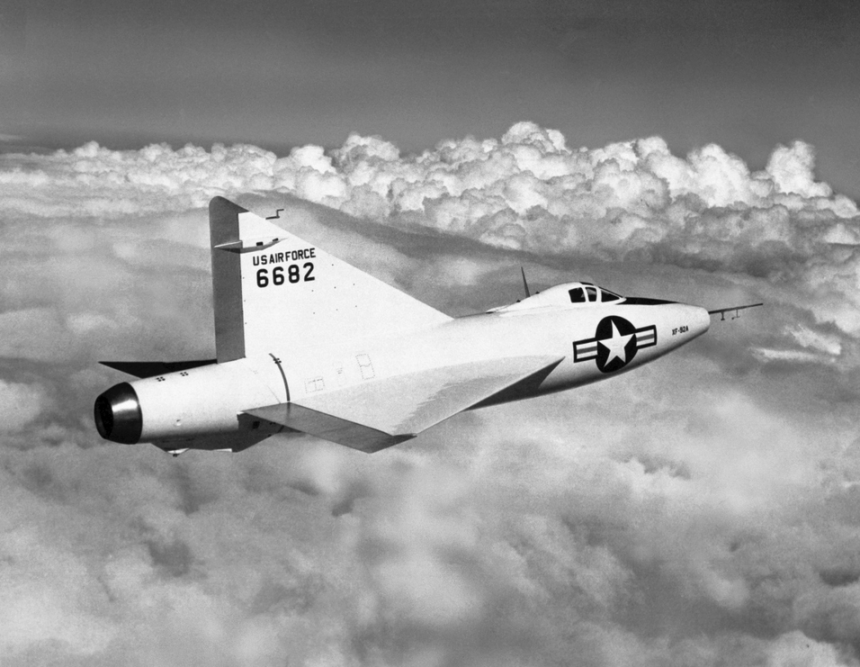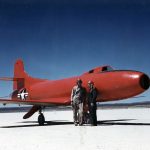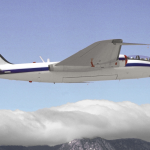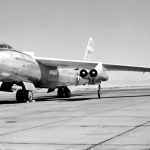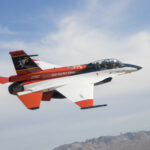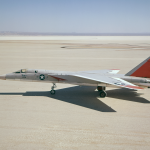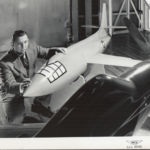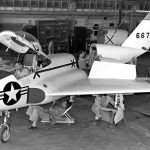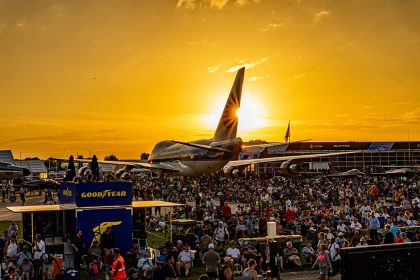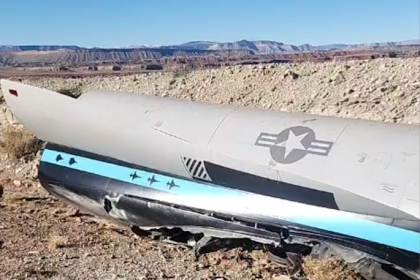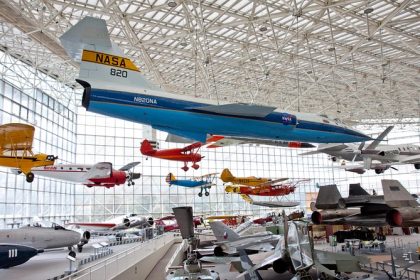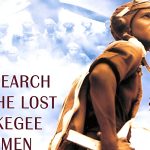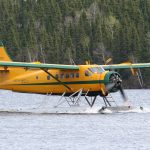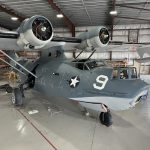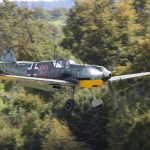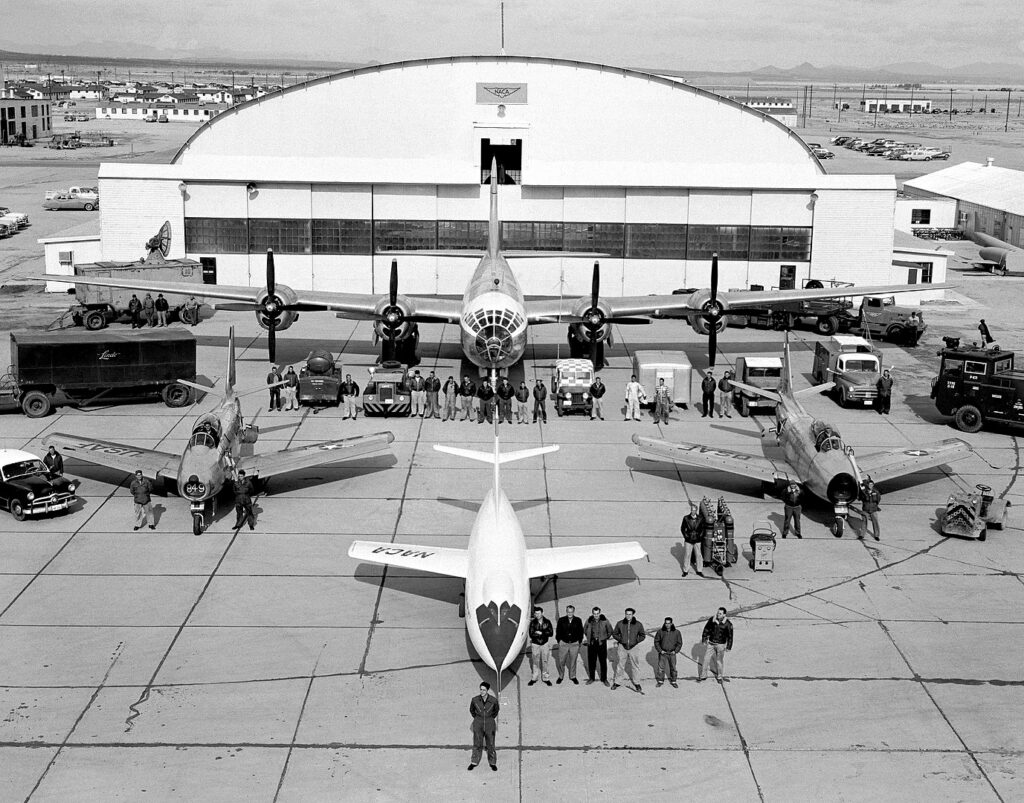
Today, we explore the Convair XF-92A Dart produced by the Consolidated Vultee Aircraft Corporation in the early 1950s. The XF-92A Dart was America’s first delta-wing aircraft. It was built as a test bed for a proposed interceptor that never materialized. The XF-92A was then used to test the delta-wing concept. The delta wing’s large area (425 square feet), thin airfoil cross section, low weight, and structural strength made a great combination for a supersonic aircraft. The aircraft was powered by an Allison J33-A-29 turbojet engine with an afterburner.
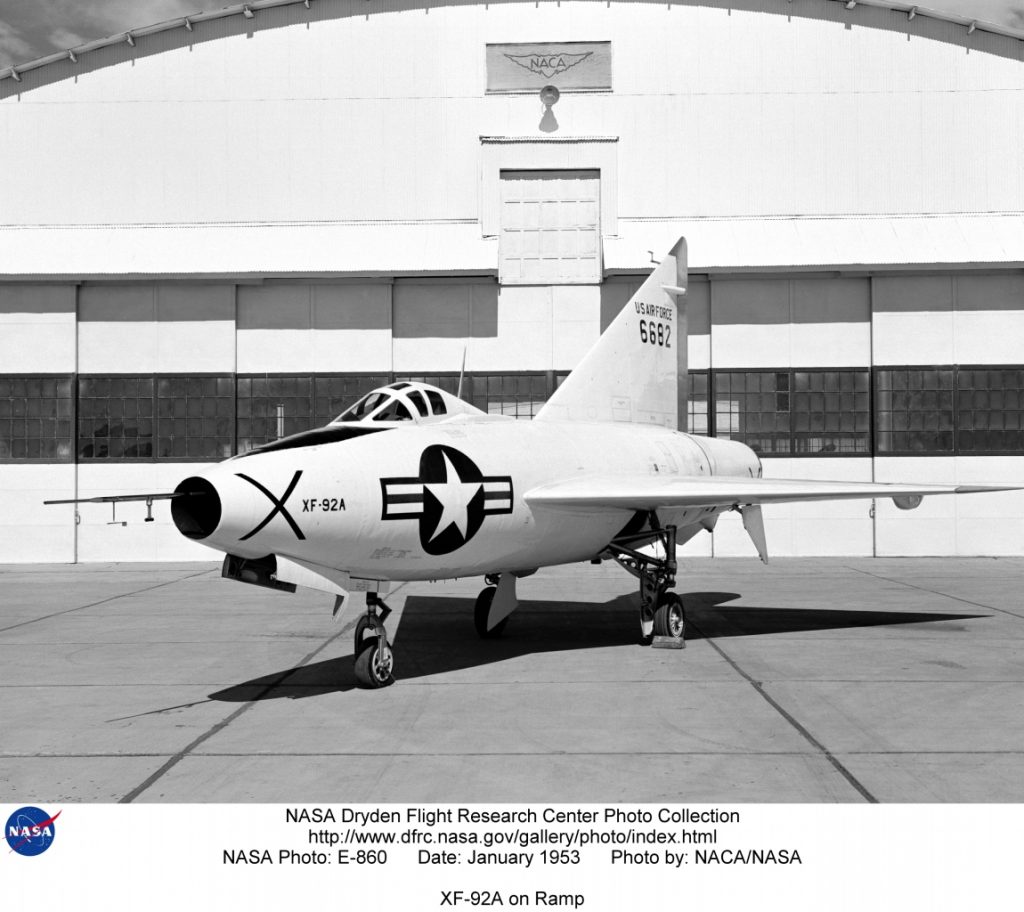
Convair and the U.S. Air Force flew the XF-92A from 1948 to 1953. After the Air Force’s plans for an interceptor failed to materialize, the NACA High-Speed Flight Research Station, which had supplied engineering, instrumentation, and operational assistance to the Air Force during its flights, took over the flight test program in 1953. A. Scott Crossfield flew all 25 NACA flights of the NACA’s XF-92A program over a six-month test period.
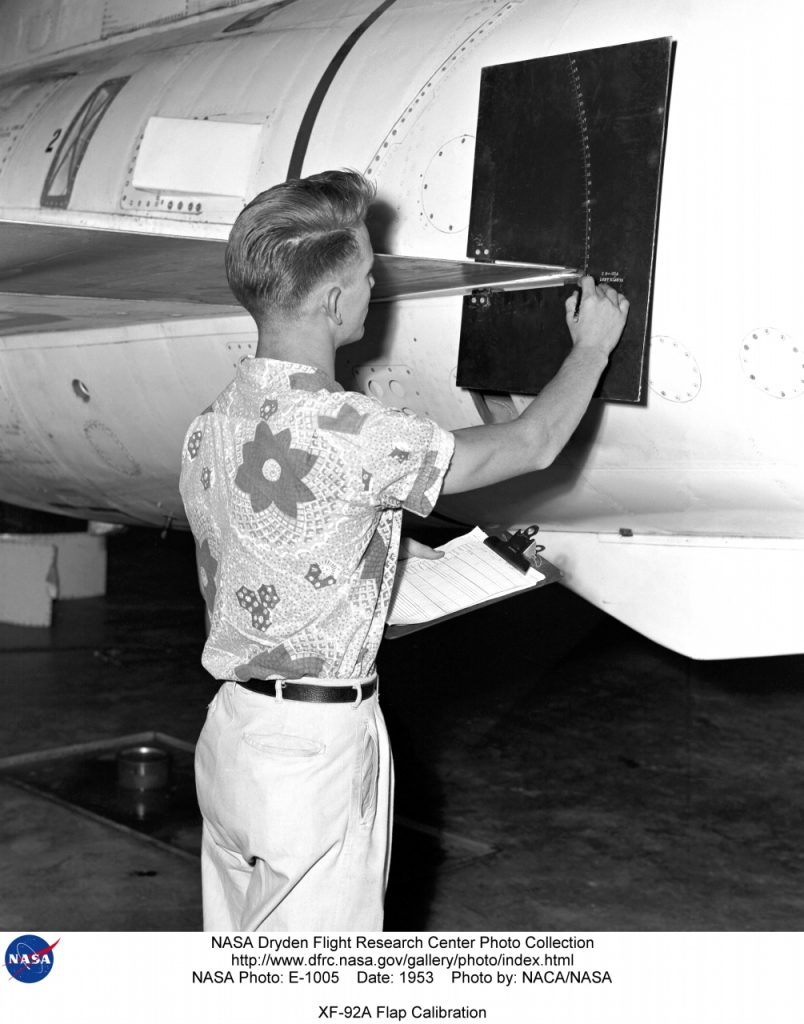
The original XF-92A ship had a severe pitch-up problem but was tested with different wing-fence combinations to gather data on their contribution to solving that problem. The pilot also reported that the aircraft was sluggish and underpowered. Besides validating the thin delta wing principle, the XF-92A played a major role in supporting the development of the Convair F-102A interceptor, the Air Force’s first attempt at an all-weather, supersonic interceptor. In 1953, the XF-92A experienced a landing gear failure on rollout after landing at the NACA High-Speed Research Station and the aircraft was retired.
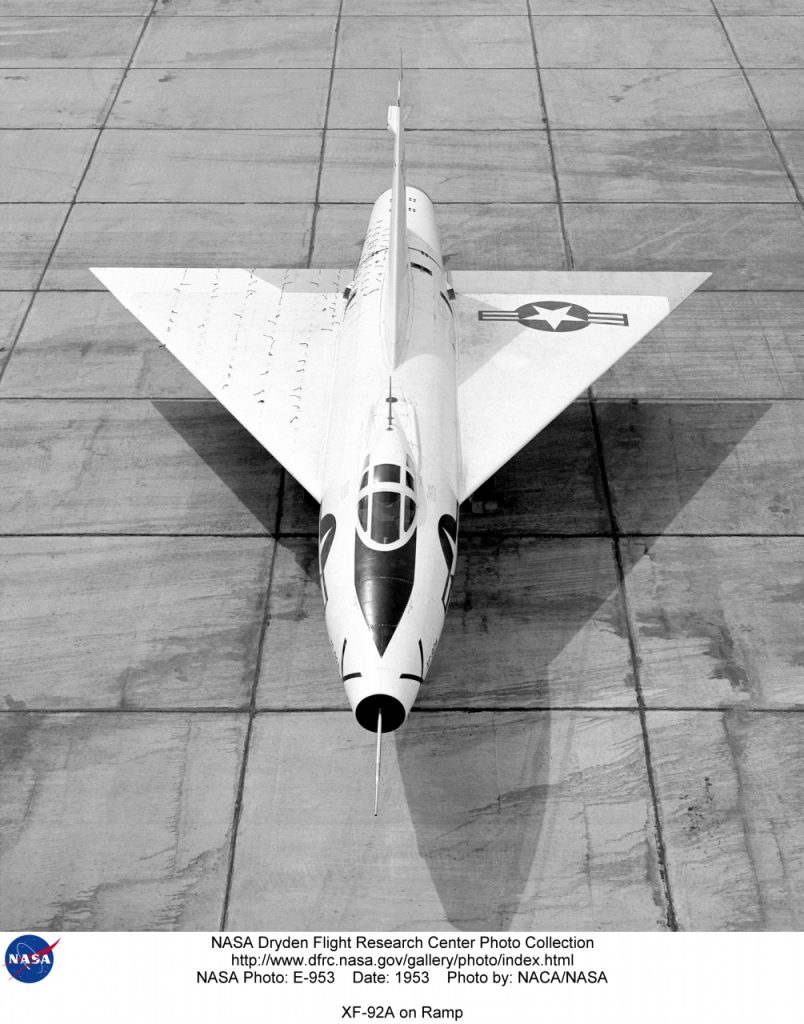
The single-place XF-92A airplane had a delta wing swept at 60 degrees. It was 48.2 feet long, had a 31.3-foot wingspan, and was 17.5 feet high at the tip of the vertical stabilizer. It was controlled by a conventional rudder and full-span elevons that functioned as elevators and ailerons. Learn More About Armstrong’s History








